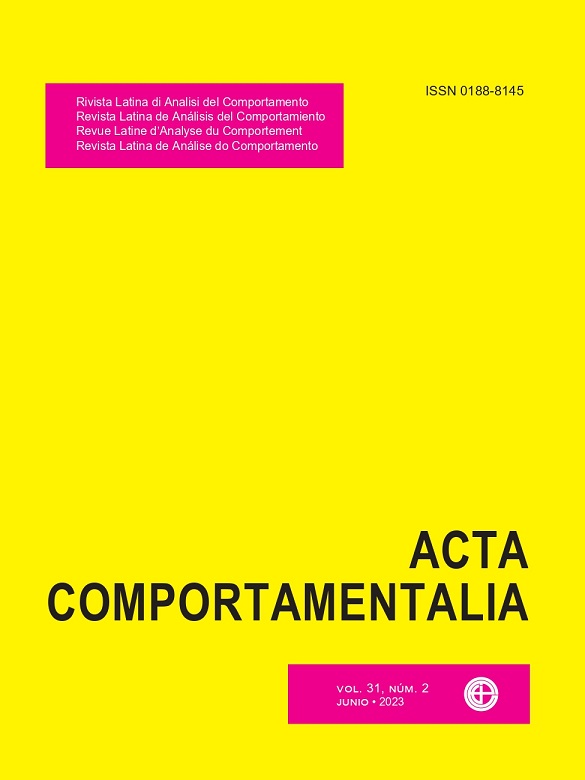Comparison of procedures for teaching facial emotions to children with ASD: Exploratory study
DOI:
https://doi.org/10.32870/ac.v31i2.85834Keywords:
recognition of emotions, matching to sample, sensory stimulation, vestibular stimulation, autism.Abstract
Recognizing facial expressions is critical in social interactions. Individuals with Autism Spectrum Disorder (ASD) may present difficulties in this recognition, requiring specific teaching interventions. Despite being widely used, there is no consensus on the effects of sensory stimulation in this type of teaching. The aim of this study was to investigate the effect of the use of vestibular sensory stimulation (a type of sensory stimulation) during the teaching of emotional expression recognition to a 3:8-years-old boy diagnosed with ASD. A multiple-probe design was used, in which the matching-to-sample procedure (MTS) and the MTS procedure associated with movements provided by a skateboard (vestibular stimulation – MTS/ES) were used alternately to teach pairs of facial expressions - happiness, sadness, anger, fear, surprise, and disgust. In Study 1, schematic drawings of faces were used. The comparison stimuli (drawings) were presented in printed form and the sample was auditory. In the teaching phase of each condition (MTS or MTS/ES), initially, each facial expression was taught separately: in each trial, the S+ and the neutral face (S-) were presented. After the learning criterion was reached with each facial expression separately, the samples were presented alternately and the comparisons were the two emotional expressions taught, plus the neutral face. In the MTS/ES condition, the participant had access to visual stimuli (trials) after a 2-meter course sitting on a skateboard. The results of the two tested procedures were inconclusive since the child learned all the stimuli, including improved performance in the probes with untrained stimuli. In Study 2, photos were used for teaching, with minor changes in the procedure: tablet were no longer used as a consequence to avoid challenging behaviors and the reinforcement schedule remained the same throughout the procedure (CRF). The participant learned all the name-photo relations, and no advantages were found for the use of vestibular stimulation - the use of skateboard was irrelevant. In the teaching of disgust and fear in the MTS/ES condition, the participant only reached the learning criterion after removing the vestibular stimulus. As in other studies on sensory stimulation, confounding variables can interfere with the results of this type of investigation and it is necessary to discuss the need for more controlled studies on the effects of sensory stimulation in teaching procedures.
Downloads
Downloads
Published
How to Cite
Issue
Section
License

<a rel="license" href="http://creativecommons.org/licenses/by-nc-sa/4.0/"><img alt="Licencia de Creative Commons" style="border-width:0" src="https://i.creativecommons.org/l/by-nc-sa/4.0/88x31.png" /></a><br />Este obra está bajo una <a rel="license" href="http://creativecommons.org/licenses/by-nc-sa/4.0/">licencia de Creative Commons Reconocimiento-NoComercial-CompartirIgual 4.0 Internacional</a>.






